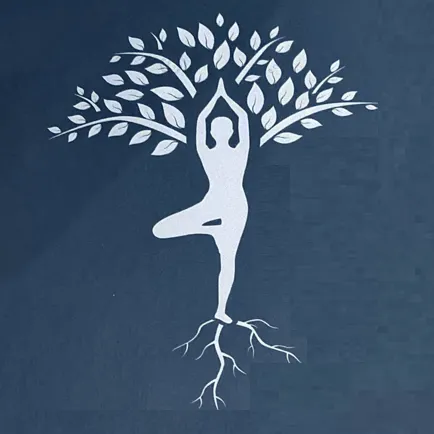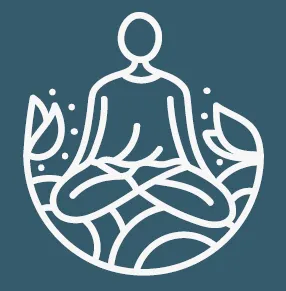Blogs
Written by Elke Hottentot

Sthirasukham āsana
Patañjali speaks of sthirasukham āsana: how does this sutra influence my teaching ?
Introduction
Sthirasukham āsana is an aphorism, a sutra (II-46), in the Samâdhi Pâda, the second chapter of the Yoga Sutras conveyed by Patañjali. According to Sri Swami Satchidananda[1], this Sutra translates as “āsana is a steady, comfortable posture”, and according to Gerard Blitz, it translates as “être fermement établi dans un espace heureux”[2].
Holding a posture requires sthira. In daily live, sthira is the force that allows us to go forward and embrace a difficult task, but equally the force required to hold us back. Without this force, we can be dangerous to ourselves, and to others. Sukha refers to a space of joy, it is a state of letting go. This means that each āsana should be typified by two qualities; ‘sthira’ on the one hand as referring to the posture being steady, and ‘sukham’ as it being comfortable. It is very important that not just one of the qualities is present, but both. If the posture is only steady, there will be too much effort and undoubtedly, ego will enter into the pose. If the posture is just comfortable, it will be too easy and one will not progress.
This sutra is not only a wise teacher when we apply it to postural work, but also to our life beyond the mat. For a person to develop in a balanced manner, it is important to develop both the quality of sthira and of sukha. If a person is only in sthira, there may be great achievements but they will be paired with lots of tension. Likewise, if a person is only sukha, s/he is unlikely to achieve much of anything.
Reflection on the impact of this Sutra on my personal life
It would not be right/ to talk about the impact of this sutra on my teaching, without reflecting first on its importance in my personal life. So, what does this Sutra mean to me personally? If I live the posture only as an exercise of steadiness, solidness, flexibility and strength, then I will tend to strive for more steadiness, greater solidness, more flexibility and so forth. I will try to bypass my own limits, exert too much effort, risk hurting myself and, more importantly, not accept what is – not be comfortable with that what presents in this present moment.
This is where ‘sukha’ enters the equation. To me, ‘sukha’ refers to finding comfort, which can only be found in the present moment, in the here and now, with what is, not what I would like it to be. To me, this refers to surrendering to what is, to truly accept what is – and as such, to be one with what is; to not refuse one thing over another, but to simply embrace that what presents. This is easier said than done though!
So, while I aim for a steady posture, I equally aim to find comfort in the effort that an āsana demands according to Patañjali. There is a ‘letting go’ while at the same time there is effort. It seems dichotomous, but somewhere in there is a beautiful experience of ever-so-present-being. Once I experienced this in a pose, I felt invited to also live this fine balance between two apparent opposites in my day-to-day life. Sometimes, when I am able to embrace this notion as a way to live, there are less valleys and peaks, because as good and as wonderful as it gets, I do not want more of it and just accept that what is given to me in that moment. And on the contrary, when life presents big challenges and difficult moments, I do not resist it and try to be steady in being my best without at the same time refusing that what is. To me, being steady can be beautiful summed up by the five yamas and niyamas; to not give up on the aspiration to live these consciously in my days, hour after hour.
So, with this 46th sutra in the chapter on practice, Patañjali serves me on a silver tray an invitation to be steady in my pursuit of authenticity while at the same time accepting my imperfections.
Reflections on the impact of this Sutra on my teaching
As for a way of teaching that is true to this sutra, I encourage students to find comfort with where they are; to not aspire for the perfect pose, while at the same time using a language and that beckons them to extend themselves, to give effort, to go that extra bit further than they would otherwise. I will carefully observe the class to make sure that people do not bypass their own physical limits and put themselves at risk of injury.
Embracing the teachings of this Sutra influences the way in which I structure a class; I start with postures that induce this state of mind, meaning a calm beginning that facilitates a centering within, a slow warm up that gradually becomes more challenging and thus demands more effort, all the while keeping the notion of comfort on the fore front. I then lead the practice towards one primary posture and all the work prior to will be to prepare the students to enter into this pose, all the while with sthirasukham āsana in mind. For those postures that demand more effort, I ask students to smile with their third eye, this to prevent them from making too great an effort thereby risking the chance to bypass the moment in which comfort can be found. Once we have practiced the primary posture, I slowly decrease the level of effort required, while at the same time reminding students that the outwardly appearing easiest āsana of shavāsana is a posture that requires a great effort of letting go.
[1] Satchidananda, Swami (2009): Integral Yoga Publications, Yogaville, The Yoga Sutras of Patanjali, p. 152.
[2] Blitz, G. (1991): Albin Michel, Paris, Yoga. Sutras Patanjali, p. 110.






